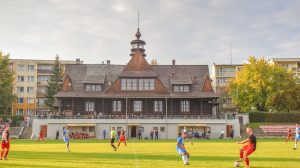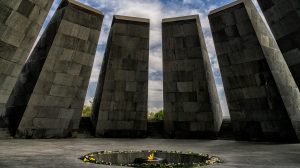This is an important year for Central and Eastern Europe, with many countries in the region marking the 30th anniversary of the fall of communism and the transition to liberal democracy and a free market economy. The situation is no different in Hungary, whose people first stood up to communist oppression in 1956. That year’s revolution – and Imre Nagy’s role in it – are now at the forefront of heated discussions due to his highly controversial character.
The staunch communist turned democrat
Asking how Imre Nagy ended up leading the Hungarian revolution against the Soviets is a valid question given that he had previously been a devoted communist. For nine years until 1941, he reported on hundreds of his colleagues to the Soviet secret police, the NKVD, and many were executed. As interior minister, he oversaw the ethnic cleansing of thousands of ethnic Germans between 1945 and 1946.
Following the death of Stalin in 1953 and subsequent anti-communist protests in East Germany, Moscow decided to remove Mátyás Rákosi, Hungary’s hardline Stalinist prime minister and appoint Mr Nagy instead. Over the next two years as PM, he pursued a “new course” policy, trying to soften dictatorial rule. Disputes with senior Hungarian communists meant that he lost Moscow’s trust however and was sacked in 1955.
The spontaneous mass protests which began on October 23, 1956 had no opposition politicians to lead them. The anti-communist crowd and the reformist members of the communist party saw Nagy as the only potential force for change, and he was once again made prime minister. He then faced the difficult task of meeting the demands of those calling for liberal democracy as well as satisfying the democratic socialists.
Following Soviet military intervention on November 4, Nagy fled to Yugoslavia and was eventually arrested with several other members of his government for his role during the revolution. After his mockery of a trial and execution, he was buried quietly with a fake identity.
It was not until the Soviet Union began to collapse that Hungary was able to give him a formal burial, with full honours. At a service on June 16, 1989, which was attended by several hundred thousand people at Budapest’s Heroes’ Square, Viktor Orbán, Hungary’s current autocratic leader, who was an emerging liberal figure at the time, gave a passionate speech demanding that Soviet troops immediately leave Hungary.
Shaping a different past?
On June 16 this year, 30 years since the reburial of Nagy, the Hungarian government organised a so-called Concert of Freedom to pay tribute to the “heroes” of 1956. More than two hundred people came to the concert to protest against what they have called the falsification of history.
The protesters, as well as leading historians and civic figures, argue that the ruling Fidesz party is trying to erase Imre Nagy’s memory and the role he played during the revolution. They argue that the party wants to put Mr Orbán (and his iconic speech calling for the Soviets to leave Hungary) at the centre of events marking the end of communism.
There had also been outrage when a statue of Mr Nagy, previously situated in a prestigious location next to the Hungarian parliament building, was moved to less prominent spot. Speaking on the 30th anniversary of Mr Nagy’s reburial, Katalin Jánosi, his granddaughter, denounced the government and the way it was placing emphasis on Mr Orbán’s role. If there is a myth being built around the Hungarian PM, it is historically false: it was then-Hungarian prime minister Miklós Németh who agreed with the Soviet government to withdraw the military months before the reburial was organised.
According to historian András Rényi, the desire for freedom was the common ground for the Hungarian people to bring down communism, but today there are competing perceptions about 1956. While some argue that the intelligentsia and the reformist socialists, including Mr Nagy, largely contributed to the slow process leading to the revolution, others – especially on the right – believe that it was the iconic street fighters and their strong anti-communist stance who should be remembered. Pro-government Hungarian media commentators have repeatedly called for an end to the “Nagy myth”, claiming that he was a devoted communist who just shifted with the tide, did what the people wanted him to do and had previously taken part in a lot of terrible crimes.
It is not unimaginable that the Hungarian government’s remembrance policy wants to replace the revolutionary PM with Mr Orbán: if they are unable to erase Imre Nagy and his name from the past, he should be remembered “the way he deserves to be”: quietly, away from the ceremonies with commemoration focused on national pride, in line with the current government’s agenda.
Nonetheless, this is overshadowed by the fact that Prime Minister Orbán himself paid tribute to Mr Nagy and placed a wreath on his grave on June 16, suggesting that he may have been a controversial communist, but he cannot be erased from Hungarian history.





[…] https://emerging-europe.com/after-hours/how-should-hungarys-revolutionary-pm-be-remembered/ […]